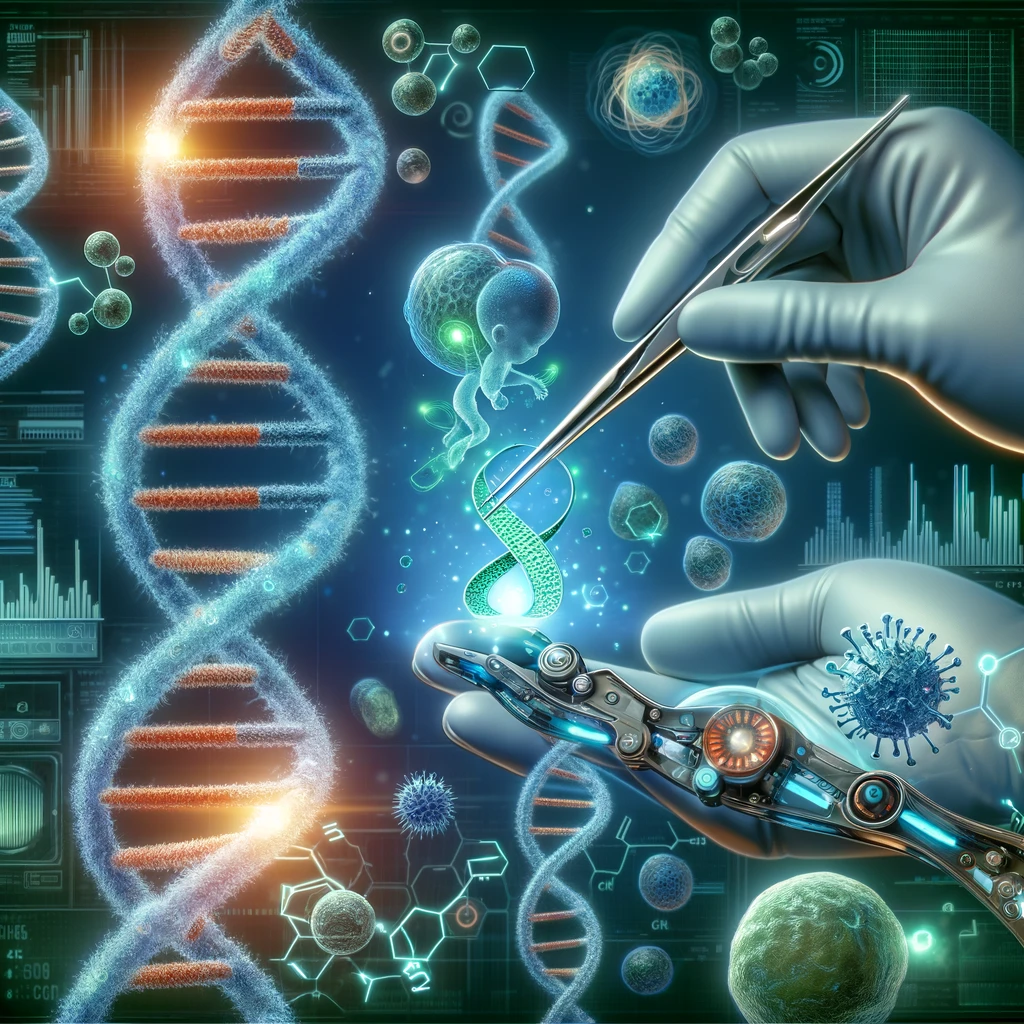What Is Changing DNA in Reproductive Cells?
Article Source: Cell - The American Journal of Human Genetics

Why you should care
Germline editing is like a tool that lets scientists "fix" genes before they're passed on to the next generation. This is a big deal because it could help prevent genetic disorders like cystic fibrosis or muscular dystrophy, improving health outcomes for future generations. Imagine a world where diseases that have plagued families for generations could be removed before they even begin—this is the promise of germline editing.
Answering the question… What Is Changing DNA in Reproductive Cells?
Germline editing involves changing DNA in a way that affects not just one person, but all their descendants. The research shows how these edits are made to reproductive cells (like sperm or eggs) to correct gene mutations. This technology could potentially prevent thousands of diseases caused by faulty genes, impacting the health of future generations. Think about it—one edit could change the lives of millions over time.
How was the study done?
Researchers conducted experiments using CRISPR-Cas9, a precise gene-editing tool. They worked with human embryos and analyzed the effects of editing specific genes to see how well the corrections worked. These studies were carefully controlled, ensuring that only the intended parts of the DNA were changed, with continuous monitoring to avoid unintended side effects. This method is paving the way for safer applications of germline editing.
What was discovered?
- Germline editing was successful in correcting mutations responsible for several genetic disorders, such as cystic fibrosis and sickle cell anemia.
- The success rate of gene correction using CRISPR-Cas9 was around 72%, which is a significant breakthrough for accuracy in genetic editing.
- Over 10,000 genetic diseases could potentially be prevented through germline editing by targeting faulty genes that are passed from parents to children.
- By eliminating harmful mutations, the study showed it is possible to reduce the risk of certain inherited diseases by 50-80% in future generations.
- The study revealed that with improved precision, off-target effects—unintended changes to other parts of the DNA—were reduced to less than 1%, making the process safer.
- The ability to alter germline DNA could lead to advances in preventing 20-30% of early childhood deaths, which are often caused by severe genetic disorders.
Why does it matter?
The discoveries from this study bring us closer to a future where genetic diseases can be eradicated before they even start. By editing the genes in reproductive cells, we could potentially stop thousands of conditions from being passed on. This has huge implications for healthcare and human evolution, offering the possibility of healthier generations. The impact on society and medicine could be profound—this is not just about curing disease, it's about rewriting our genetic future.
